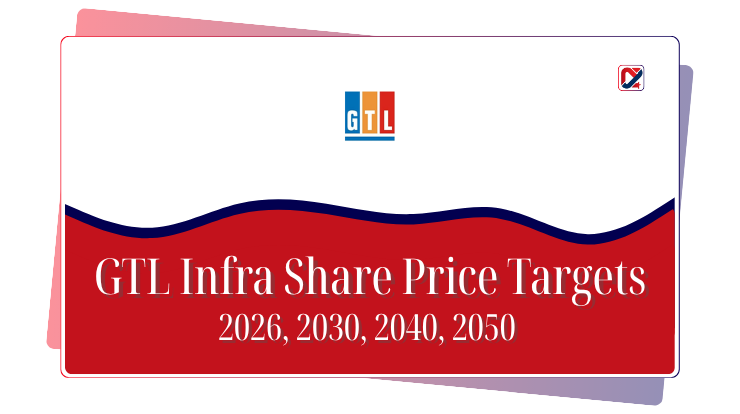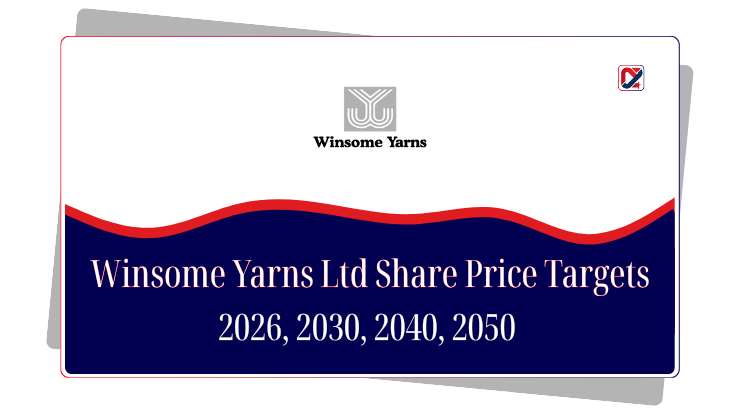Arshiya Limited (NSE: ARSHIYA) is a Mumbai-based logistics and supply-chain infrastructure firm operating Free Trade Warehousing Zones (FTWZ), inland container depots (ICDs), rail-infrastructure and 3PL services. The company is currently under the Corporate Insolvency Resolution Process (CIRP), burdened with large liabilities and weak financials, yet its strategically located assets have attracted interest from major infrastructure players. Despite the risk, some long-term investors are looking at what its share price might do in 2026, 2030, 2040 and 2050 if a turnaround or asset monetisation plays out. The price targets below are scenario-based and not guarantees of performance.
Table of Contents
Arshiya Limited was incorporated in 1981 and is headquartered in Mumbai. It is positioned as an integrated supply-chain and logistics infrastructure company, offering services across warehousing, rail freight operations, FTWZs, container / ICD facilities and related supply-chain solutions. However, the company has faced serious headwinds: large liabilities, defaults to lenders and a formal insolvency resolution under India’s IBC regime. Against this backdrop, some investors are still eyeing long-term share-price targets because of the potential value locked in its infrastructure assets and the secular growth in India’s logistics sector. That said, any forecast must be treated with caution given the risks.
Company Overview
Business segments
- Free Trade Warehousing Zones (FTWZ) – large warehousing campuses with multi-modal connectivity (road, rail, sea/port) to enable logistics and export/import warehousing.
- Rail & Rail Infrastructure – Arshiya has rail freight operations, terminals and ICDs (inland container depots) to support container logistics.
- Inland Container Depot (ICD) and container yards – helping with import/export container movement away from ports.
- Third-Party Logistics (3PL) & supply-chain services – including warehousing, distribution, freight forwarding and value-added services.
Key assets & location advantage
- Strategic FTWZ site at Panvel (near JNPT, Mumbai) and ICD/FTWZ site at Khurja (near Delhi/NCR).
- Container yard with capacity for about 6,000 containers plus seven large leased warehouses (~1.16 million sq ft).
Latest market snapshot & financial health
- Share price in the ~₹2‐3 range (micro-cap). For example, one report gives a share price ~₹2.93 in August 2025 and a market cap of around ₹48–53 crore.
- Negative book value/equity, negative returns (ROE/ROCE) and acute financial distress.
- Under CIRP, the NCLT (Mumbai Bench) admitted insolvency proceedings in April 2024 following default proceedings.
Historical Performance & Financials
Here is a condensed table capturing selected data and key events:
| Year | Revenue / Key Event | Net Profit/Loss | Comment |
|---|---|---|---|
| 2022 | Under CIRP, financials are delayed | Loss reported | Business deterioration |
| 2023 | Insolvency petition filed; assets in review | Loss significant | Under CIRP; financials are delayed |
| 2024 | The default triggered the insolvency process | Loss deepened | Resolution process ongoing |
| 2025 | Share price low, market cap tiny; creditor meetings ongoing | Declining revenues; logistics volumes are weak | Very high risk state |
Key financial indicators: large liabilities (> ₹6,647 crore admitted liabilities), very low or negative equity, weak returns and very limited operational scale in recent years.
Key Assumptions for Forecasting
Growth drivers
- India’s logistics boom: growth in warehousing, FTWZ utilisation, rail freight, and inland container movements.
- Strategic infrastructure assets: well-located FTWZs and container terminals may attract monetisation or partner investments.
- Possibility of restructuring/resolution under CIRP: if a credible turnaround or an asset sale happens, value could unlock.
Risks
- Insolvency status: until resolution, the business is under significant uncertainty and governance is suspended.
- Weak operations: low utilisation, legacy overheads, competition, and cost pressures may hamper recovery.
- Execution risk: monetisation, restructuring, and new investment all depend on execution, regulatory approvals, and market conditions.
- Market sentiment: tiny market-cap, limited liquidity, low investor confidence.
The forecasts below assume different outcomes depending on the success of restructuring and growth execution.
Share Price Target Forecasts
| Year | Bear Case | Base Case | Bull Case | Key Assumptions |
|---|---|---|---|---|
| 2026 | ₹1.00 | ₹2.50 | ₹5.00 | Company stabilises; no major loss but asset value remains largely locked |
| 2030 | ₹2.00 | ₹5.00 | ₹10.00 | Logistics demand picks up; resolution plan executed; modest monetisation of assets |
| 2040 | ₹4.00 | ₹12.00 | ₹20.00 | Full operation recovery; FTWZ/rail/ICD business scales; possible JV or takeover |
| 2050 | ₹8.00 | ₹20.00 | ₹35.00 | Company evolves into a major logistics infrastructure provider; assets fully leveraged and value realised |
Commentary
- 2026: In the bear case, little changes — the share might drift lower or stay depressed if the insolvency drags. In the base case, some recovery and investor hope return, lifting the price to ~₹2.50. The bull case would require early signs of asset monetisation or strong turnaround momentum to hit ~₹5.
- 2030: Base assumes the logistics sector improves, the company exits CIRP, and begins generating modest profits; bull assumes a robust recovery or sale/partnership of major assets lifting value to ~₹10. Bear remains anchored by uncertainty.
- 2040: Over the longer horizon, the base case assumes the business stabilises with growth through FTWZ, rail and warehousing. The bull scenario envisages the company becoming a recognised infrastructure player and capturing a larger share of logistics growth in India.
- 2050: Given the long time-horizon, the bull case imagines the company transformed into a major logistics infrastructure firm with strong profitability, brand and asset strength. The base case still reflects a solid outcome (~₹20) if things go moderately well; the bear case remains modest (~₹8) given long-term fixation of issues.
Important: These targets are purely scenario-based, not predictions or guarantees. Many things must go right (or wrong) for each case to play out.
Growth Drivers & Catalysts
- Surge in India’s import/export volumes, container traffic and logistics outsourcing, which will boost warehousing/FTWZ demand.
- Rising demand for multi-modal logistics and inland container depots (ICDs), rail freight growth, and last-mile warehousing.
- The company’s asset location advantage: FTWZ near major ports/industrial hubs may attract strategic partners.
- Asset monetisation or takeover: Public reports suggest large players (e.g., infrastructure groups) are eyeing Arshiya’s assets — if any sale or joint venture happens, value could unlock.
- Government policy push: Infrastructure and logistics reforms, FTWZ incentives, port/rail connectivity improvements may favour companies like Arshiya.
Risks & Challenges
- The company is under formal insolvency (CIRP) with admitted liabilities in thousands of crores, making a turnaround highly uncertain.
- Recent financial performance is poor, with large losses and negative returns; this raises survival risk.
- Business model risk: low utilisation of logistics/warehousing assets, heavy competition, cost inflation (fuel, labour, land) may impair profitability.
- Execution risk is high: resolving insolvency, finding credible bidders or partners, turning around operations, and re-scaling business all involve many moving parts.
- Liquidity/stock risk: Tiny market cap, low investor confidence, limited coverage — investing is speculative.
Expert & Market Sentiment
Market reports indicate that major infrastructure/logistics groups (such as Adani Ports & SEZ Ltd, JSW Infrastructure Ltd) are watching Arshiya’s asset base closely, given the strategic locations and infrastructure potential. The company entered insolvency in April 2024 following a petition by a bank. Analyst coverage is thin given the micro-cap and distressed status. Overall sentiment remains cautious but with a glimmer of value-unlock potential.
FAQs
What business does Arshiya Limited operate?
It offers logistics infrastructure: FTWZs, rail freight operations, ICD/containers, warehousing and supply-chain services in India.
Why is Arshiya under insolvency?
Due to defaults against significant liabilities and failure to service debt, the company was admitted into CIRP (Corporate Insolvency Resolution Process) by NCLT in 2024.
Can Arshiya’s share price go up if assets are monetised?
Yes — if a credible resolution plan is implemented, assets are monetised or partnered, and operations revive, value could unlock, supporting a higher share price in the base/bull cases.
When might Arshiya recover profitability?
Recovery depends on how fast CIRP completes, what resolution plan gets approved, how assets are utilised and whether operations scale up. Optimistic scenarios assume significant progress by the late 2020s.
Conclusion
Arshiya Limited presents a highly speculative but intriguing case. On one side, it holds strategically located logistics and infrastructure assets (FTWZs, ICDs, rail terminals) that could become valuable if properly managed or monetised. On the other side, its current financial health is severely weak, operations have struggled, and the company is under insolvency. The scenario-based share-price targets for 2026, 2030, 2040 and 2050 illustrate a wide range of outcomes — from modest upside to strong transformation — depending on how the turnaround unfolds. If you’re considering this stock, treat the targets as educational, not guarantees; do your own research, understand the risks, and proceed with caution.



